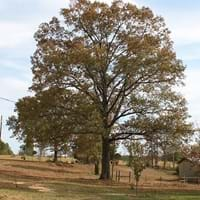Life Span
Perennial
Perennial
Origin
Hybrid origin
United States, Mid-Atlantic United States, Southeastern United States, Central United States, South-Central United States
Types
Aristocrat, Buckeye Belle, Henry Bockstoce , Abalone Pearl, Coral Supreme, Cytherea, Charlie's White
Not Available
Number of Varieties
Not Available
Habitat
Hillside, Woods
Sandhills
USDA Hardiness Zone
Not Available
6-9
Sunset Zone
Not Available
Not Available
Habit
Clump-Forming
Oval or Rounded
Flower Color
Not Available
Red, Light Green
Flower Color Modifier
Bicolor
Bicolor
Fruit Color
Not Available
Brown, Black
Leaf Color in Spring
Not Available
Green, Gray Green
Leaf Color in Summer
Not Available
Gray Green, Dark Green
Leaf Color in Fall
Not Available
Gray Green, Dark Green, Tan, Dark Red
Leaf Color in Winter
Light Green
Not Available
Leaf Shape
Compound
Lobed
Plant Season
Spring, Summer
Spring, Summer, Fall
Sunlight
Full Sun, Partial Sun, Partial shade
Full Sun
Type of Soil
Clay, Loam
Clay, Loam, Sand
The pH of Soil
Acidic, Neutral, Alkaline
Acidic, Neutral
Soil Drainage
Average
Well drained
Bloom Time
Not Available
Spring
Tolerances
Drought
Pollution
Where to Plant?
Ground, Pot
Ground
How to Plant?
Grafting, Seedlings, Stem Planting, Transplanting
Seedlings, Stem Planting, Transplanting
Plant Maintenance
Medium
Medium
Watering Requirements
Does not require lot of watering, It cannot sustain wet-feet, Keep the ground moist but not water-logged, Needs watering once a week, Prefer drip-irrigation instead of Over-head watering, Water occasionally
Average Water Needs, Do Not over Water, Keep ground moist, Never Over-water, Requires watering in the growing season, Water less during winter
In Summer
Lots of watering
Lots of watering
In Spring
Moderate
Moderate
In Winter
Average Water
Average Water
Soil pH
Acidic, Neutral, Alkaline
Acidic, Neutral
Soil Type
Clay, Loam
Clay, Loam, Sand
Soil Drainage Capacity
Average
Well drained
Sun Exposure
Full Sun, Partial Sun, Partial shade
Full Sun
Pruning
Do not prune during shooting season, Prune to control growth, Remove dead or diseased plant parts, Remove deadheads
A hard prune may be necessary if the plant becomes woody, Remove damaged leaves, Remove dead branches, Remove dead leaves
Fertilizers
All-Purpose Liquid Fertilizer
fertilize in growing season
Pests and Diseases
Botrytis Blight, Leaf spot, Stem spot, Viruses
Leaf Blister, Spider mites
Plant Tolerance
Drought
Drought, Salt
Flowers
Yes
Insignificant
Flower Petal Number
Not Available
Not Available
Foliage Texture
Not Available
Coarse
Foliage Sheen
Not Available
Glossy
Allergy
Not Available
no allergic reactions
Aesthetic Uses
Beautification, Bouquets, Showy Purposes, Used for decorating walls, fences, gates, hedges, etc.
Landscape Designing
Beauty Benefits
Not Available
Not Available
Environmental Uses
Air purification
Air purification
Medicinal Uses
Cough, Gout, Headache, Heartburn, Kidney problems, Upset stomach, Urinary tract problems
Nutrients
Part of Plant Used
Flowers, Root, Seeds
Bark, Seeds, Stem, Tree trunks
Other Uses
Showy Purposes, Used as Ornamental plant, Used for fragrance
Economic Purpose, Used in construction
Used As Indoor Plant
No
No
Used As Outdoor Plant
Yes
Yes
Garden Design
Cutflower, Feature Plant, Foundation, Mixed Border
Feature Plant, Shade Trees
Botanical Name
PAEONIA 'Rachel'
QUERCUS falcata
Common Name
Intersectional Peony
Southern Red Oak
In Hindi
Intersectional Peony
दक्षिणी लाल ओक
In German
Intersectional Pfingstrose
Südliche Red Oak
In French
intersectionnelle Pivoine
Chêne rouge du Sud
In Spanish
interseccional Peony
Roble Rojo meridional
In Greek
διατομεακές Παιώνια
Νότια Red Oak
In Portuguese
interseccional Peony
Southern Red Oak
In Polish
międzysegmentowe Piwonia
Southern Red Oak
In Latin
Intersectional AGLAOPHOTIS
Quercus falcata
Phylum
Tracheophyta
Magnoliophyta
Class
Magnoliopsida
Magnoliopsida
Order
Saxifragales
Fagales
Family
Paeoniaceae
Fagaceae
Clade
Angiosperms, Core eudicots, Eudicots
Angiosperms, Eudicots, Rosids
Tribe
Not Available
Not Available
Subfamily
Not Available
Not Available
Number of Species
Not Available
Importance of Intersectional Peony and Southern Red Oak
Want to have the most appropriate plant for your garden? You might want to know the importance of Intersectional Peony and Southern Red Oak. Basically, these two plants vary in many aspects. Compare Intersectional Peony and Southern Red Oak as they differ in many characteristics such as their life, care, benefits, facts, etc. Every gardener must at least have the slightest clue about the plants he wants to plant in his garden. Compare their benefits, which differ in many ways like facts and uses. The medicinal use of Intersectional Peony is Cough, Gout, Headache, Heartburn, Kidney problems, Upset stomach and Urinary tract problems whereas of Southern Red Oak is Nutrients. Intersectional Peony has beauty benefits as follows: Not Available while Southern Red Oak has beauty benefits as follows: Not Available.
Compare Facts of Intersectional Peony vs Southern Red Oak
How to choose the best garden plant for your garden depending upon its facts? Here garden plant comparison will help you to solve this query. Compare the facts of Intersectional Peony vs Southern Red Oak and know which one to choose. As garden plants have benefits and other uses, allergy is also a major drawback of plants for some people. Allergic reactions of Intersectional Peony are Not Available whereas of Southern Red Oak have no allergic reactions respectively. Having a fruit bearing plant in your garden can be a plus point of your garden. Intersectional Peony has no showy fruits and Southern Red Oak has showy fruits. Also Intersectional Peony is flowering and Southern Red Oak is not flowering . You can compare Intersectional Peony and Southern Red Oak facts and facts of other plants too.





